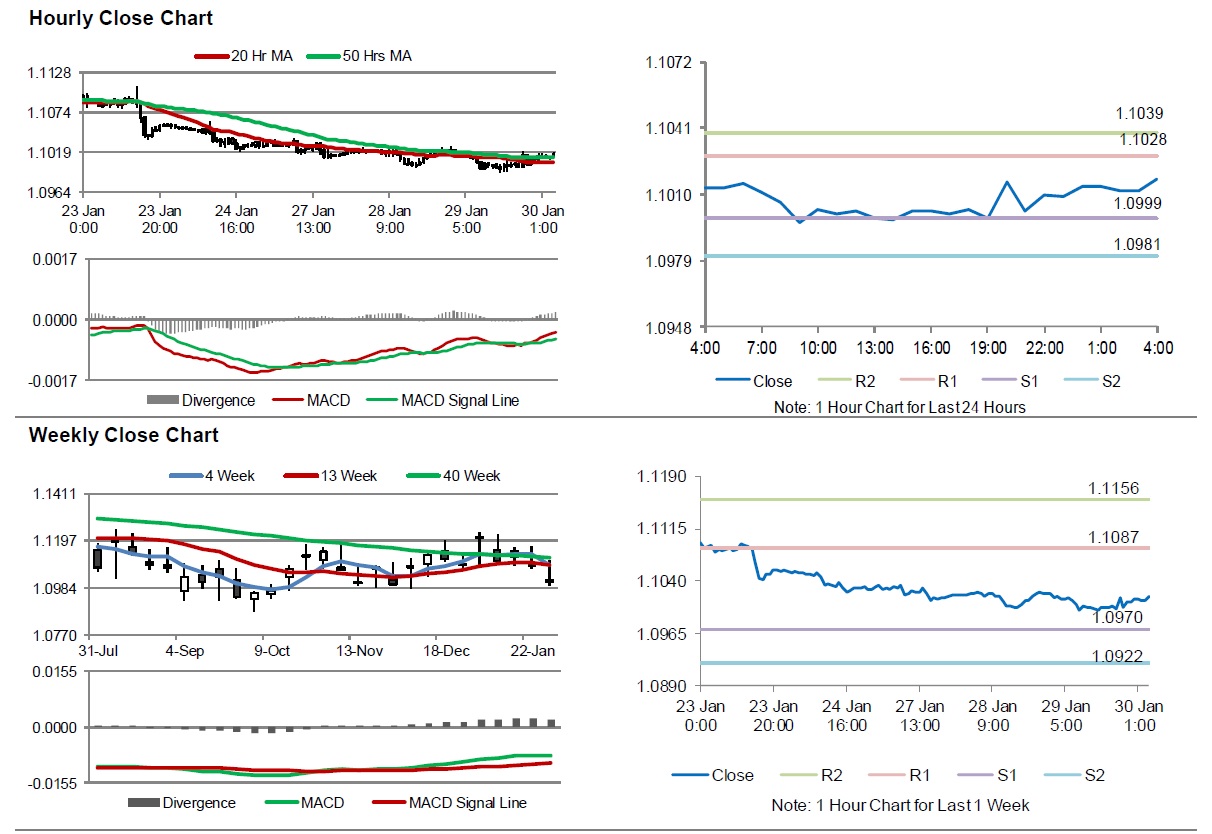For the 24 hours to 23:00 GMT, the EUR declined 0.11% against the USD and closed at 1.1000 yesterday. In the Euro-zone, in December, private sector loans climbed 3.7% on an annual basis, higher than market expectations for an advance of 3.6%. Private sector loans had climbed 3.5% in the previous month. Whereas, M3 money supply climbed 5.0% on an annual basis in December, lower than market expectations for an advance of 5.5%. M3 money supply had risen 5.6% in the prior month. Also, in Germany, consumer confidence recorded an unexpected rise to 9.90 in February, compared to market expectations of a drop to a level of 9.60. The consumer confidence index had recorded a revised level of 9.70 in the previous month. Meanwhile, in the US, pending home sales unexpectedly dropped to its lowest level since 2010 in December, while, its goods trade deficit widened in the same month, as imports rebounded, and businesses became more cautious on accumulating inventory. Meanwhile, on the macro-economic front, US Federal Reserve (Fed) left the benchmark interest rate unchanged at 1.75%, with the Fed Chairman, Jerome Powell painting a picture of a solid economy that is fuelled by strong job gains and a confident consumer willing to spend. However, he noted that global risks remain, including the outbreak of a deadly new coronavirus.
In the Asian session, at GMT0400, the pair is trading at 1.1017, with the EUR trading 0.07% higher against the USD from yesterday’s close.
The pair is expected to find support at 1.0999, and a fall through could take it to the next support level of 1.0981. The pair is expected to find its first resistance at 1.1028, and a rise through could take it to the next resistance level of 1.1039.
Trading trends in the pair today are expected to be determined by the release of the consumer sentiment index for January and unemployment rate for December in the Euro-zone along with German consumer price index for January. Meanwhile, the release of US gross domestic product annualised for 4Q19 will keep investors on their toes.
The currency pair is trading above its 20 Hr and 50 Hr moving averages.

